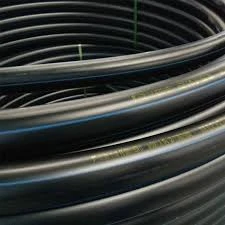دسامبر . 09, 2024 23:31 Back to list
HDPE Pipe Accessories for Enhanced Connection and Durability in Plumbing Systems
Understanding HDPE Pipe Fittings An Overview
High-Density Polyethylene (HDPE) pipe fittings are essential components in various piping systems, particularly in water distribution, gas distribution, sewage, and industrial applications. With their unique combination of resilience, flexibility, and lightweight properties, HDPE fittings have gained popularity across several sectors. This article delves into the benefits, types, applications, and installation of HDPE pipe fittings.
What is HDPE?
High-Density Polyethylene is a thermoplastic polymer created from petroleum. It is characterized by its high strength-to-density ratio, making it an ideal material for various industrial uses. HDPE is known for its resistance to impact, UV rays, and a wide range of chemicals, which is particularly important in piping systems that transport aggressive substances.
Benefits of HDPE Pipe Fittings
1. Durability HDPE fittings are incredibly resistant to corrosion and degradation due to environmental factors. This durability translates to a longer lifespan for the entire piping system, reducing the need for frequent replacements.
2. Flexibility The flexible nature of HDPE allows for easy installation, even in challenging terrains. This property makes it an excellent choice for areas prone to seismic activities or soil shifting.
3. Chemical Resistance Since HDPE is inert, it can transport a variety of chemicals without fear of leaks or contamination. This feature is crucial in agricultural and industrial applications where chemicals are commonly handled.
4. Cost-Effective While the initial cost may be on par with traditional piping materials like PVC or metal, the long-term savings from reduced maintenance and replacement frequency make HDPE a cost-effective option.
5. Environmentally Friendly HDPE is recyclable, contributing to a more sustainable approach in the construction and waste management sectors.
Types of HDPE Pipe Fittings
HDPE pipe fittings come in various forms, each serving distinct functions within a piping system
1. Elbows Used to change the direction of the flow in the pipeline, available in various angles (e.g., 45° or 90°).
2. Tees These fittings allow for branching off from the main pipeline, facilitating multiple flow paths.
3. Reducers Used to connect pipes of different diameters, reducers are essential for adapting to varying flow requirements.
hdpe pipe fittings

4. Couplings Simple connectors used to join two lengths of pipe together, ensuring a strong and continuous flow path.
5. Caps and Plugs Used to seal the ends of pipes to prevent leaks or intrusion.
Applications of HDPE Pipe Fittings
The versatility of HDPE pipe fittings enables their use across various industries
1. Water Distribution Systems Their corrosion resistance and durability make HDPE fittings an excellent choice for municipal water systems.
2. Gas Distribution HDPE pipe fittings are widely utilized in transporting natural gas due to their strength and chemical resistance.
3. Sewage and Drainage These fittings are frequently employed in sewer systems and drainage applications, offering reliable performance in harsh conditions.
4. Irrigation In agriculture, HDPE fittings facilitate efficient water distribution, essential for modern irrigation systems.
5. Industrial Applications Many industrial processes utilize HDPE for chemical transfer due to its ability to withstand harsh substances.
Installation Considerations
The installation of HDPE pipe fittings requires specific techniques to ensure long-term reliability
1. Proper Welding Techniques HDPE fittings are typically joined using heat fusion processes, which require trained personnel to achieve strong joints.
2. Tools and Equipment Specialized tools are used for cutting and joining HDPE pipes and fittings, enhancing the efficiency of the installation process.
3. Careful Planning A thorough understanding of the application and environment is essential to select the appropriate type and size of HDPE fittings.
In conclusion, HDPE pipe fittings are integral to modern piping systems due to their extensive benefits and applications. Their durability, flexibility, and resistance to chemicals make them a preferred choice for various industries, contributing to sustainable infrastructure solutions worldwide. As the demand for reliable and environmentally-friendly piping systems continues to grow, HDPE pipe fittings will undoubtedly play a crucial role in meeting future challenges in pipeline management.
-
HDPE Natural Sheet: Durable, Food-Grade & Versatile Plastic Solutions
NewsAug.27,2025
-
Durable Glossy PVC Rigid Sheet | Premium High-Shine Panels
NewsAug.26,2025
-
Durable PP Rigid Sheet: Lightweight, Chemical Resistant Solutions
NewsAug.21,2025
-
PVC Grey Sheet for Extraction: Chemical Resistant & Durable
NewsAug.19,2025
-
Durable PVC Pipe Fittings for Plumbing & Irrigation Needs
NewsAug.18,2025
-
HDPE Steel Belt Reinforced Spiral Corrugated Pipe | High Strength
NewsAug.17,2025

